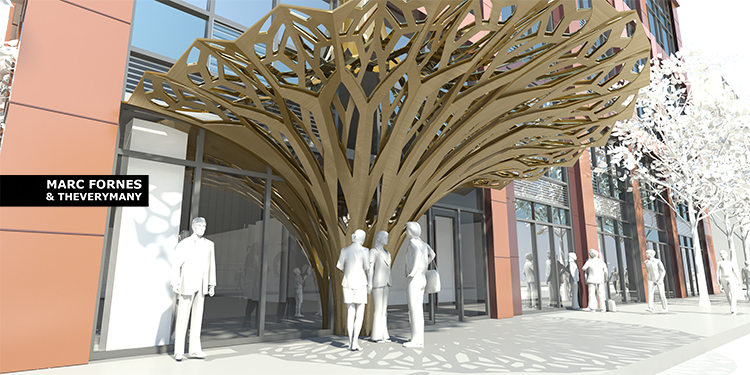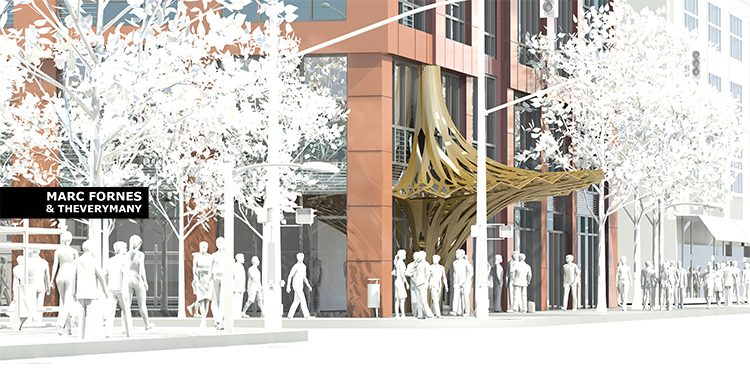Entrance canopy
San Francisco, CA (2015)
Design & computation: MARC FORNES & THEVERYMANY
The project takes on several roles: an art piece, space for both rest and interaction, and an enhancement of the visual identity of the new loft building and the neighborhood at large. With these intrinsic qualities, the artwork celebrates the notion of perception, place, and innovation with an aesthetically pleasing addition to the cultural and artistic qualities of the city. It is our goal for the art to not only serve the infrastructure and the residents, but also to resonate with a larger audience and amplify the beauty of the building and its surroundings.
The project aims to be reflective of the fast-paced environment expected to take place on-site, enhanced with the activity of the new residents and to be completely integrated into the artwork. The project performs as a portal from the interior of the building and out to the city, framing the entrance as a symbolic and representative gateway. The framing works as a catalyst component for interest both inside and outside the building.We are taking into account the dynamic attributes and specific situations of such a an environment, in which people costantly move from one place to another with increasing haste. Beyond being a transitional space, the project then becomes an interaction point and a meeting place both spontaneous and common.
The structure is proposed to be built out of aluminum. The surface of the work consists of a set of metal elements overlapping on different layers and working together as one complete structural element. The reason behind choosing aluminum as the main material is its durability, lightness, strength, resilience to corrosion and clean aesthetic as well as its simplicity of implementation on site.
The assembly technique involves initial production and off-site pre-assembly of some portions of the structure. The individual pieces will be machine-cut and will have all the embedded information needed for the final assembly. This makes it possible to produce the pieces accurately and exactly as they are in the original 3-D computational model. Additionally, parts can be reproduced, such that a damaged part that needs replaced can be cut, shipped and installed quickly. A great advantage of this technique is time flexibility and speedy installation due to the prefabrication of every single part (including finishing). Once they are ready they are transported to site, where they only need to be assembled together. When every element in the ensemble is secured to its contiguous piece, the result is a continuous surface, both rigid and solid, self-standing and resistant to any event, climatic or otherwise.










